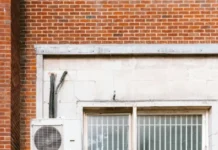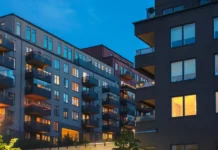Plumbing systems play a crucial role in every home, acting as the unseen network that ensures clean water flows freely while efficiently removing waste. When these systems start to fail, the effects can be disruptive and costly. You might notice persistent leaks, fluctuating water pressure, or frequent clogs, signaling that there are deeper issues at play. Although quick fixes may offer temporary relief, a full repiping project often stands out as the most effective long-term solution. Understanding when to undertake this significant investment can save you from ongoing headaches, escalating repair bills, and potential property damage.
In this article, you’ll explore the signs that indicate your plumbing may need a complete overhaul, the materials involved, the costs associated with repiping, health and safety concerns, and the long-term benefits of this investment.
Why Quick Fixes Often Fall Short
When plumbing problems emerge, it’s common for homeowners to seek quick solutions. You might patch a leaky joint, switch out a faucet, or apply a temporary seal on a crack, thinking you’ve solved the issue. However, when repairs seem to be a constant necessity, it’s a clear sign that the plumbing system is deteriorating. In areas with older homes or shifting soil, like the Bay Area, consulting with skilled plumbers can help pinpoint the root cause of your plumbing woes.
While temporary fixes may seem budget-friendly at first, they often accumulate costs that exceed what a complete repiping would entail. Ignoring the underlying problem can lead to wasted water, repeated disruptions, and even structural damage from unseen leaks.
Identifying Key Signs for Repiping
Understanding the warning signs of failing pipes can empower you to act before issues spiral out of control. Look out for these common indicators:
Once these symptoms start to become frequent, relying on temporary repairs may no longer be viable, and repiping becomes a more sensible choice.
Understanding Plumbing Materials and Their Durability
The need for repiping can largely depend on the materials used in your plumbing system. Older homes often feature galvanized steel pipes, which can corrode and typically last between 20 and 50 years. Copper pipes are more durable but can deteriorate over time, especially in areas with acidic water.
Modern constructions often utilize PEX or CPVC, known for their flexibility, corrosion resistance, and ease of installation. Selecting the appropriate material for repiping not only addresses current issues but also enhances long-term reliability. Consulting a professional plumber can help you choose the best option based on your home’s specific needs and local water quality.
The Financial Aspect of Repiping
Cost concerns frequently deter homeowners from pursuing repiping. It’s important to recognize that while replacing an entire plumbing system requires a substantial upfront investment, the cumulative expenses from repeated repairs, water damage, and inflated water bills due to hidden leaks can surpass the cost of a comprehensive repipe.
Moreover, investing in repiping can significantly elevate your property’s value. Potential buyers will appreciate an updated plumbing system, reducing their worries about immediate repairs after moving in.
Health and Safety Risks Associated with Old Pipes
In addition to financial implications, aging pipes can pose serious health risks. Contaminants like rust, sediment, or even lead from old plumbing can taint your drinking water, leading to health concerns for you and your family. Furthermore, hidden leaks can give rise to mold growth, which can be especially hazardous for children, the elderly, or individuals with respiratory issues.
By opting for repiping, you are not just ensuring clean water for daily use; you’re also minimizing the risks of structural damage caused by long-term leaks.
Enjoying Long-Term Peace of Mind
The most significant advantage of repiping is the peace of mind it offers. Rather than fretting about the next leak or clog, you can feel confident that your plumbing system is dependable, safe, and efficient. Expect improved water pressure, reduced contamination risks, and lower maintenance costs.
Repiping also contributes to water conservation—an essential consideration in today’s world. By eliminating leaks and inefficiencies, you not only help the environment but also see a reduction in your utility bills.





















